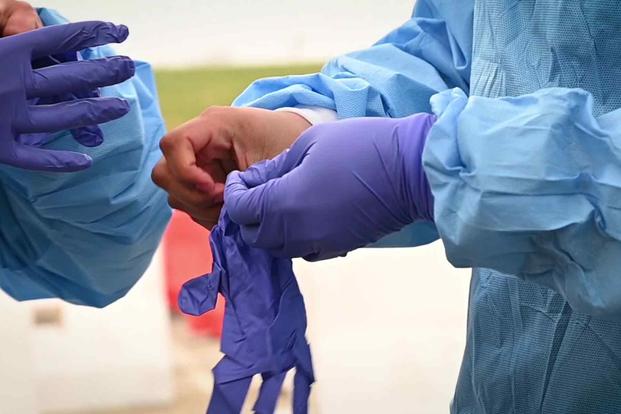Lax security controls at U.S. military hospitals and clinics threaten lives and leave facilities vulnerable to criminal activities such as theft, damage and terrorism, according to a new investigation by the Department of Defense Inspector General.
In an audit released Thursday of security measures at eight military medical treatment facilities, DoD IG investigators found that the facilities' security controls had alarming weaknesses that allowed personnel and volunteers to access medical centers at all hours or to enter restricted areas without authorization.
For example, at two of the examined MTFs, unauthorized personnel, including volunteers, could enter facilities through rear doors at any time, giving them access to equipment, pharmaceuticals and patient information.
At six facilities, unauthorized personnel had access to restricted areas like pharmacies. The IG determined that, in at least one instance, three unauthorized personnel used a badge to access the narcotics vault.
Related: Military Patients Will 'Absolutely, Positively See Better Care After Merger, DHA Head Says
At five of the eight facilities, fuel storage tanks and hospital generators weren't secured properly, increasing "the risk of damage, sabotage or acts of terrorism, potentially resulting in failure of medical equipment and loss of life," according to the DoD IG report.
Based on their findings, investigators said they believe similar flaws may be found at 450 DoD medical facilities under Defense Health Agency management.
"The restricted areas where medical equipment and pharmaceuticals were stored were vulnerable to unauthorized access, and the MTFs were vulnerable to incidents of violence, sabotage, or terrorism," wrote Theresa S. Hull, assistant inspector general for audit, acquisition, contracting and sustainment. "Based on our findings at the MTFs we visited and the lack of minimum physical security standards, we concluded that these weaknesses may also exist at other DoD MTFs."
The facilities were redacted in the report.
A DoD IG spokeswoman said inspectors did not name the facilities because they “did not want to disclose the security weaknesses at the MTFs we reviewed.”
“There were several reasons, one is because of the For Official Use Only that we used from [the] GAO report … we did not want to disclose the names of the MTFs,” DoD IG spokeswoman Dwrena Allen said.
IG officials said they launched the investigation following a 2019 Government Accountability Office probe that reported inconsistencies in personnel access control at U.S. military installations and changes to hospital management at Army, Navy and Air Force facilities during the past two years.
Under military health system reforms that began in 2016, the Defense Health Agency has started taking over the administration of all military hospitals and clinics. The facilities were to begin adhering to DHA policies, including security, beginning Oct. 1, 2018.
But according to the report, the DHA lacks a uniform set of standards regarding physical access to facilities and security monitoring requirements.
Part of the reason the DHA has not established specific physical security requirements for the facilities is because it "recently assumed operational control of most DoD MTFs on October 25, 2019, and has not updated all policies and guidance," IG officials wrote.
A number of high-profile incidents have demonstrated flaws in security systems at military hospitals. In 2015, Army veteran Jerry Serrato fatally shot Department of Veterans Affairs psychologist Dr. Timothy Fjordbak at a VA clinic at the William Beaumont Army Medical Center campus at Fort Bliss, Texas.
The same year, a Marine who was brought to the emergency room at Naval Hospital Camp Lejeune, North Carolina, grabbed an officer's weapon and fired it. While no one was injured during the incident, the subsequent investigation showed that lapses in security contributed to the event.
The report noted there were 647 armed robberies of controlled substances at non-military pharmacies across the U.S. in 2018, and the rate of workplace violence incidents is, on average, four times greater for health care workers than in private industry, according to the Occupational Safety and Health Administration.
The DoD IG recommended that the DHA issue uniform guidance to MTFs to ensure that unauthorized staff do not have blanket access to facilities, determine whether clinics have a baseline level of protection, restrict access through certain doors and assess generator and fuel storage security.
In response, Army Lt. Gen. Ronald Place, the DHA director, said he agreed with the recommendations. According to Place, the agency will take corrective action, to include creating interim policies for access systems, entry doors, security guards and video and alarm monitoring systems.
-- Patricia Kime can be reached at patriciankime@gmail.com. Follow her on Twitter @patriciakime.
Read More: Military Services Wanted Major Health Care Personnel Cuts, DHA Director Says











